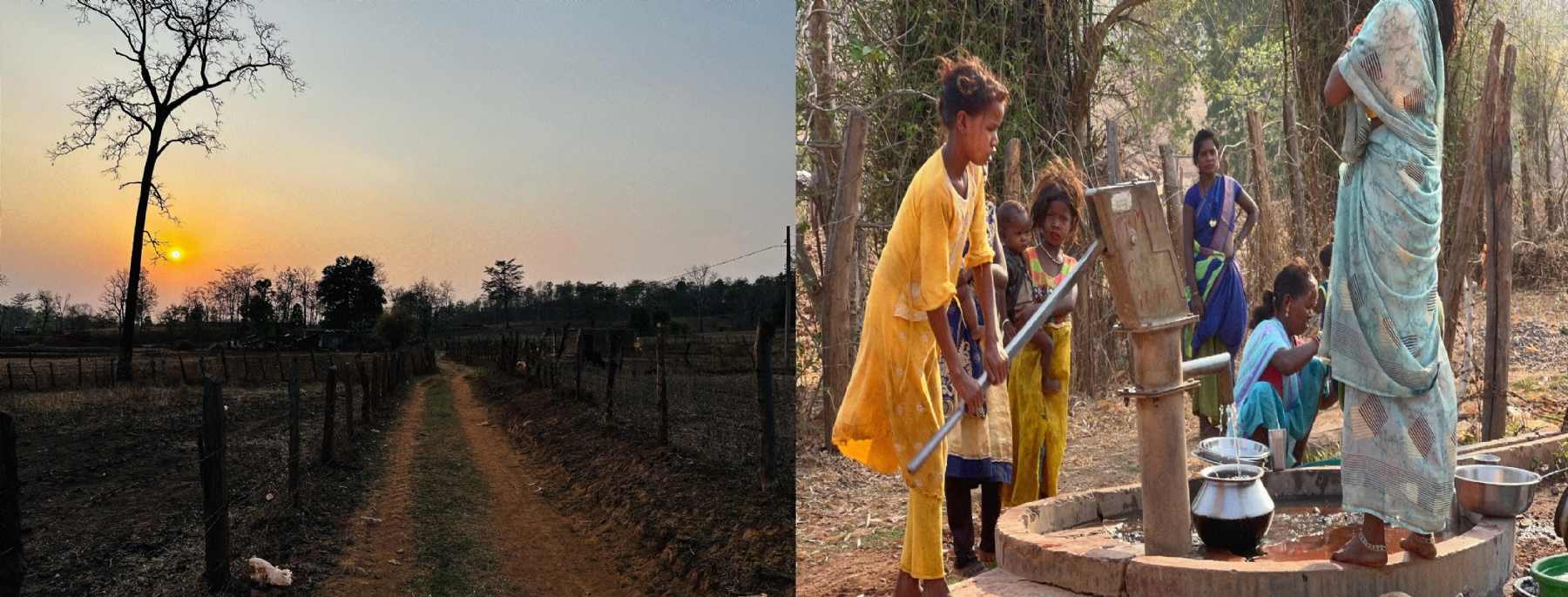Darkness and despair in Chhattisgarh’s Gwalgundi
| Date :22-Apr-2025 |

The dirt road leading to Gwalgundi. (R) Women manually drawing hard-water from hand-pump for lack of tap connections and electricity.
By Roshan Chachane :
RAIPUR
Nestled amidst the dense forests, Gwalgundi, the last village of Chhattisgarh bordering Madhya Pradesh, and eight other villages in Khairagarh district paints a grim picture of neglect and deprivation.
Despite being a part of the country for over seven decades, the village remains devoid of even the most basic amenities electricity, water supply, and paved roads. For its residents, the fall of night brings complete darkness, broken only by the flickering flames of burning wood, as they remain trapped in a time that seems to have stood still since independence.
The villagers’ daily struggles are arduous. Fetching water often requires hours-long treks to distant ponds and rivers. Essential goods are a luxury, necessitating a 15-kilometer journey on foot.
The situation turns dire during the monsoon, as unpaved roads turn to mud, rivers swell, and drain crossings become life-threatening undertakings.
What makes Gwalgundi’s plight even more heart-wrenching is the glaring contrast with Harratola, a village in neighboring Madhya Pradesh, situated just a few feet away.
In Harratola, electricity poles stand tall, water pipelines reach every household, and bridges connect even the remotest parts of the village. While Gwalgundi languishes in darkness and neglect, Harratola thrives, with its residents benefiting from government schemes and infrastructural advancements.
This stark disparity has left the villagers of Gwalgundi feeling helpless and forgotten. Elders lament that they have never seen electricity in their homes, and their children must rely on torchlight to study. Women voice their frustration, watching their Madhya Pradesh neighbors enjoy modern facilities while they remain mired in deprivation.
ADM Prem Kumar Patel acknowledged Gwalgundi’s struggles, attributing them to its location in a remote, hilly area that was once a hotbed for Naxal activities.
While declaring the area Naxal-free and outlining plans for better roads, electricity, and tourism development, he offered little solace to the villagers, who wonder why the government has not acted sooner.
The story of Gwalgundi is not unique. Eight other villages Jhilmili, Singbora, Amatola, Nizamdih, Sanjari, Kohkajhori, Lawatara, Tingipur in the district face similar neglect despite being home to Particularly Vulnerable Tribal Group (PVTG), adopted children of the President of India. For these communities, development remains a distant dream. They have watched successive governments make promises and pass legislation, yet none have brought the light of progress to their lives.
